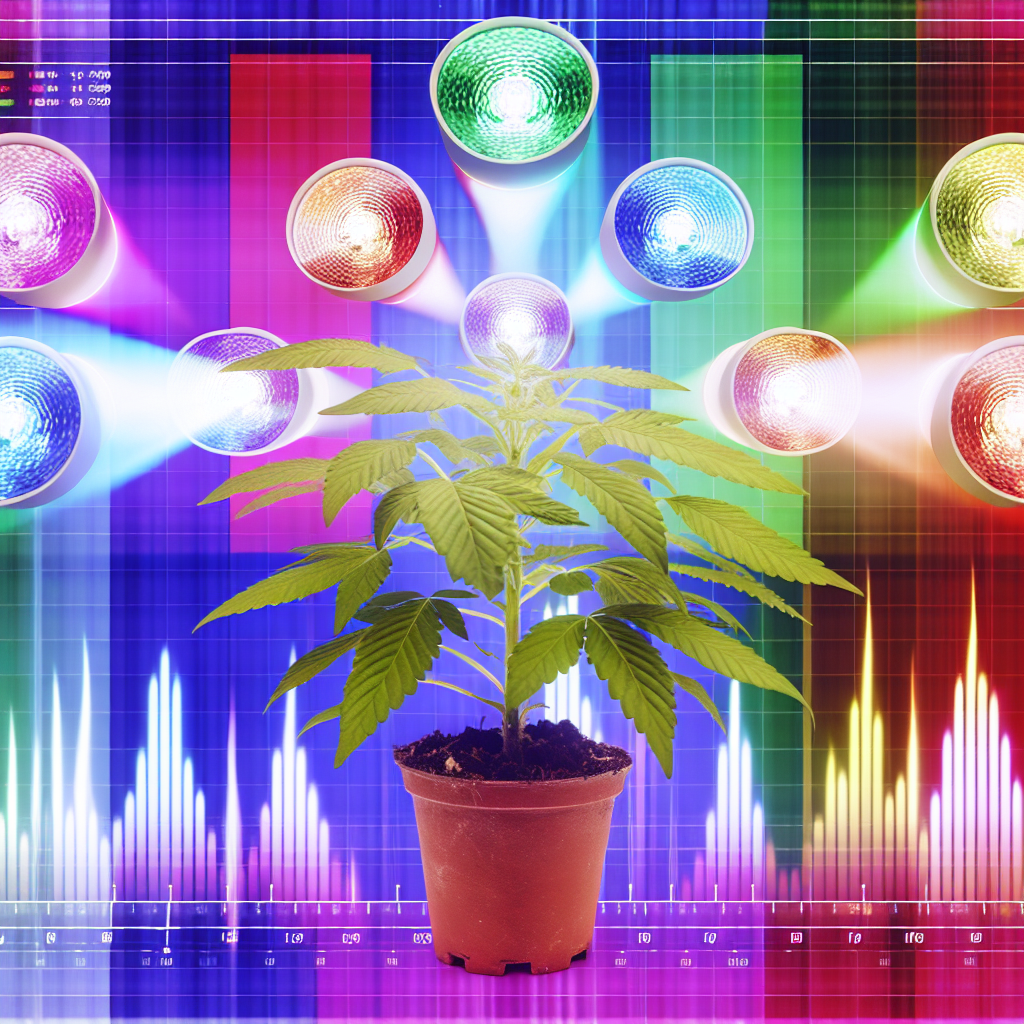Spectral Quality over Quantity – Manipulating LED Light Recipes to Influence Morphology
Introduction
As cannabis cultivation evolves from traditional outdoor or HID-based growing to more refined indoor and greenhouse operations, the lighting approach is undergoing a critical transformation. This shift replaces a quantity-based lighting model—focused strictly on metrics like PPFD (Photosynthetic Photon Flux Density) and DLI (Daily Light Integral)—with a quality-based framework driven by spectral tuning.
Smart LED lighting systems have enabled cultivators to craft tailored “light recipes,” blending specific wavelengths such as blue (400–500 nm), red (600–700 nm), and far-red (700–750 nm) to influence critical aspects of plant morphology. These include internodal spacing, leaf area, plant height, branching patterns, and the expression of key metabolites like cannabinoids and terpenes. For example, adjusting the spectrum can produce cannabis with shorter, denser flowers higher in THC, or alternatively, promote vegetative growth for mother plant propagation.
In resource-limited indoor environments or legal medical markets where production consistency and cannabinoid standardization are essential, this ability to manipulate physiological outcomes via spectrum presents unparalleled control. Not only can growers fine-tune morphology for better canopy management, but they can also reduce electricity usage and mitigate stretch or energy-wasting photomorphogenesis.
From small-batch connoisseur growers to pharmaceutical-grade production facilities, a deeper understanding of light spectra allows operators to minimize risk, boost efficiency, and dramatically influence product quality.
Features and Scientific Findings
One foundational study, “Optimization of light-emitting diodes for cannabis cultivation using photosynthetic, growth, and cannabinoid response” (2021), published in Frontiers in Plant Science, dives into the influence of varying red and blue light combinations on biomass and cannabinoid concentration.
Key findings show that boosting the blue light component to approximately 20–30%:
– Encourages compact plant structure.
– Decreases internodal length.
– Increases trichome density—leading to improved THC and terpene yields.
While blue light is essential for resin-rich flowers, it can reduce total biomass slightly. Therefore, striking the right balance of spectra becomes crucial, depending on production goals such as maximizing weight vs. maximizing chemical potency.
A complementary study by Magagnini, Grassi, and Kotiranta (2018) explored how specific wavebands affect cannabinoid biosynthesis. Rich red-dominant conditions produced taller, leggier plants with more vegetative growth but lower THC levels. Conversely, more balanced or blue-heavy spectra increased cannabinoid potency—suggesting growers must calibrate their light spectrum to align with their desired chemotypic outcomes.
Effect of Far-Red Light
Far-red light (700–750 nm), historically excluded from most grow lights, has gained increasing attention. As shown in Far-red light is necessary for efficient photochemistry and photosynthesis (Park & Runkle, 2018), this wavelength can enhance the Emerson effect—boosting photosynthesis when used alongside red light. Properly timed far-red applications (e.g., at the start or end of a light cycle) can:
– Promote flower expansion.
– Speed up transition to bloom.
– Improve photosynthetic efficiency.
However, excessive far-red can lead to leggy, undesirable phenotypes. Smart LED systems allow far-red doses to be fine-tuned during specific stages such as pre-flower for vertical stretch or during late flower to enhance bud development.
UV Light in Cannabis Cultivation
Both UV-A (315–400 nm) and UV-B (280–315 nm) are lesser-used yet powerful light bands for manipulating cannabinoid expression. Per Liu & Weng (2020), these shorter wavelengths induce plant stress responses, leading to higher secondary metabolite production. Benefits of limited UV exposure include:
– Increased trichome formation.
– Elevated potency of cannabinoids like THC or CBD.
– Enhanced terpene complexity.
Because UV light can damage cells and increase operational risk, it’s often delivered in micro-doses or only during late flowering stages. Advanced systems now integrate UV diodes or allow for selective supplemental UV application.
Hormonal and Genetic Interactions
Emerging science is exploring how light quality influences hormone-regulated processes at the molecular level. For instance, variable spectra alter levels of:
– Gibberellins – involved in vertical plant growth.
– Auxins – affect apical dominance, branching, and root formation.
– Photoreceptor genes – modulate flowering, circadian rhythms, and phytochemical production.
Through targeted light manipulation and understanding gene expression pathways, cultivators can deeply influence flower timing, resin production, and even lineage-specific traits such as pest resistance.
Conclusion
Prioritizing spectral quality over PPFD alone is revolutionizing modern cannabis cultivation. Leveraging the tunability of LED systems offers unprecedented control over plant morphology, flowering timelines, and cannabinoid/terpene profiles.
This technology boosts production precision, energy efficiency, and repeatability. Whether the goal is boutique flower with enhanced terpene aroma or pharmaceutical-grade potency, cultivators fluent in spectral science will remain at the forefront of the industry. As more research unveils how different light environments impact features at the genetic and biochemical levels, those who embrace these technologies position themselves to produce superior, consistent, and high-value cannabis products.
Concise Summary
Tailoring LED light spectra allows cannabis growers to influence plant height, leaf size, trichome density, and cannabinoid content more effectively than focusing on intensity alone. Studies show that blue light improves potency and flower density, while red light encourages vegetative mass. Far-red and UV wavelengths, when applied thoughtfully, can further enhance flower quality and phytochemical expression. Spectral tuning is especially valuable for consistent, pharmaceutical-grade cannabis production, and advances in LED technology now allow precise customization for better yields, potency, and energy savings.
References
1. Magagnini, G., Grassi, G., & Kotiranta, S. (2018). The effect of light spectrum on the morphogenesis and cannabinoid content of Cannabis sativa L. Journal of Medical Cannabis.
2. Rodriguez-Morrison, V., Salazar-Gutiérrez, M. R., & Llewellyn, D. (2021). Optimization of light-emitting diodes for cannabis cultivation using photosynthetic, growth, and cannabinoid response. Frontiers in Plant Science.
3. Park, Y., Runkle, E.S. (2018). Far-red light is necessary for efficient photochemistry and photosynthesis. Journal of Plant Physiology.
4. Liu, Y., & Weng, Q. (2020). Effect of ultraviolet light on cannabinoid production in Cannabis sativa. Planta Medica International Open.
5. Zhen, S. & Bugbee, B. (2020). Far-red photons have equivalent efficiency to traditional photosynthetic photons. Scientific Reports.




